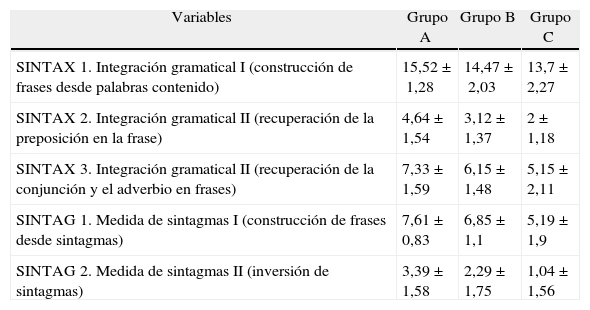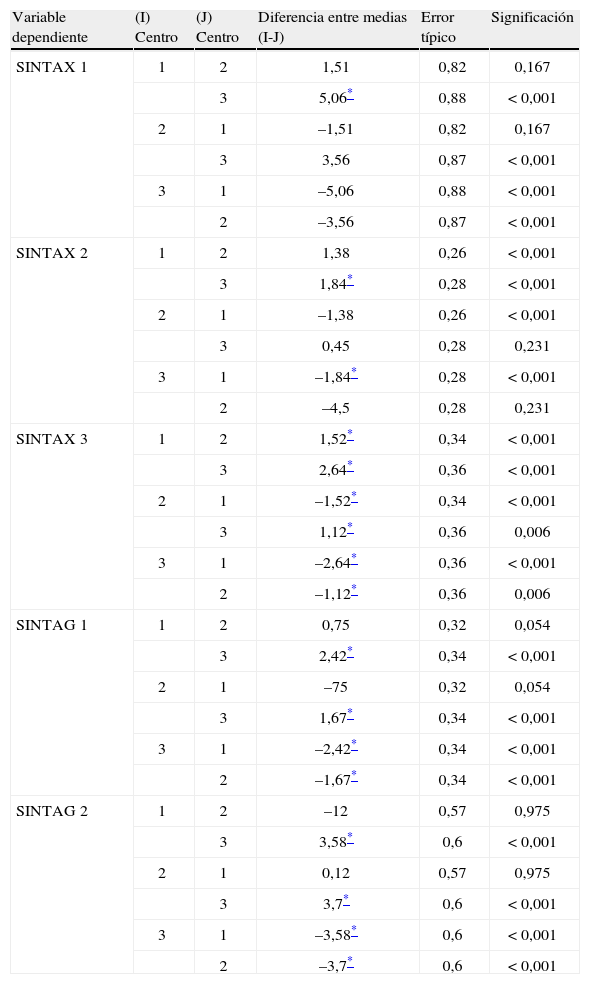Este trabajo tiene el propósito de caracterizar las dificultades lingüísticas de los alumnos con privación sociocultural, así como de los niños con alteraciones lingüísticas, con el fin de proporcionarles la atención educativa adecuada. Para ello, se comparan las ejecuciones en diversas medidas sintácticas de tres grupos de niños con edades comprendidas entre los 7 años y medio y los 9 años (grupo control, n=33; grupo con privación, n=34, y grupo con trastorno específico del lenguaje –TEL–, n=27). Los niños respondieron a un conjunto de medidas sintácticas diseñadas para esta investigación. Los resultados arrojan diferencias entre el grupo control y el grupo con privación en las medidas que implican integración de palabras funcionales y requieren mayor composición metalingüística; no se confirmaron tales diferencias cuando las medidas consistían solamente en producir estructuras sintácticas a partir de palabras con significado o de sintagmas. Por el contrario, se confirman diferencias significativas entre el grupo control y el grupo con TEL en todas las medidas, y es la producción de estructuras sintácticas a partir de sintagmas la que arroja mayores diferencias entre el grupo con privación social y el grupo con TEL. Se discute la mayor dependencia socioambiental de algunas medidas sintácticas frente a otras, así como las dificultades específicas de los niños con TEL, no sólo en la realización de tareas de producción lingüística, sino también en aquellas que requieren mayor planificación de las estructuras del lenguaje.
This study aimed to characterize the linguistic difficulties of students with sociocultural deprivation, as well as those of children with language disorders in order to provide appropriate educational care. To do this, we compared performance in various syntactic measures in three groups of children aged between 7 years and 6 months and 9 years [control group, n=33; deprived group, n=34; specific language impairment (SLI) group, n=27]. The children responded to a set of syntactic measures designed for this research project.
The results showed differences between the control group and the deprivation group in measures involving functional integration of words and requiring greater metalinguistic composition. These differences were not confirmed when the measures consisted only of producing syntactic structures from meaningful words or phrases. In contrast, significant differences were confirmed between the control group and the SLI group on all measures. When the SLI and the social deprivation group were compared, the greatest difference were found in the production of syntactic structures based on phrases.
We discuss the greater influence of social and environmental factors on some syntactic measures than on others, and the specific difficulties of children with SLI, not only in performing tasks of language production, but also in those requiring greater planning of language structures.
Artículo
Comprando el artículo el PDF del mismo podrá ser descargado
Precio 19,34 €
Comprar ahora













